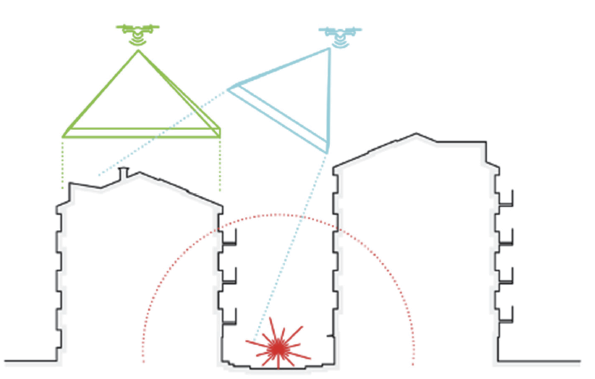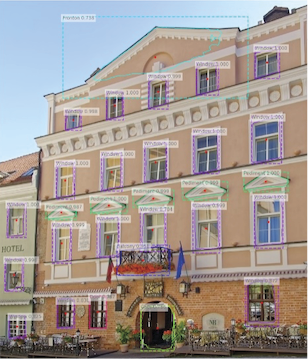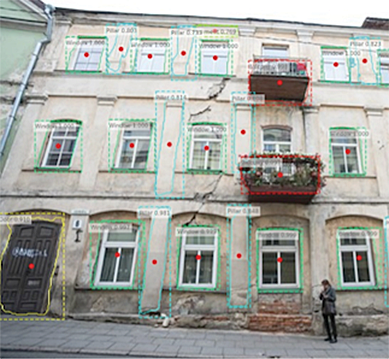Information & Media eISSN 2783-6207
2022, vol. 93, pp. i–v DOI: https://doi.org/10.15388/Im.2022.93.65
Digitization of Urban Heritage Preservation Practices for Vilnius City
Vladislav V. Fomin
Kaunas Faculty, Vilnius University
vvfomin@gmail.com
https://orcid.org/0000-0001-8423-2500
Copyright © 2022 Vladislav V. Fomin. Published by Vilnius University Press. This is an Open Access article distributed under the terms of the Creative Commons Attribution Licence, which permits unrestricted use, distribution, and reproduction in any medium, provided the original author and source are credited.
Urban Heritage Preservation (UHP) is one of the government services, where there is a great potential for innovation through digitization. At the same time, UHP is a very versatile and complex task, digitization of which requires discovery and development of and experimentation with new digital tools and techniques.
For UNESCO Heritage site Vilnius City, urban heritage preservation (UHP) is an important task aimed at monitoring various risks associated with preservation of heritage valuables in urban heritage areas. Those valuables can be small and large, tangible and intangible: building façade, building doors, windows, roof elements, gates, panorama view on a heritage site, heights of the building, volumes of the building, etc. Risks to heritage valuables may vary from gradual and cumulative processes (such as age-related degradation) to sudden and catastrophic events (such as floods, fires, or armed conflict). There are also risks connected to the intentional or unintentional destruction of cultural heritage. Those usually are the cases of city infrastructure development and purposeful rebuilding of the heritage objects.
Establishing effective, let alone efficient operation of UHP practice in a city of the size of Vilnius is a grand challenge due to the vast resources required to implement risk monitoring procedures, but also due to the complex nature of the very task of UHP given the broad scope of the types of heritage valuables, the broad range of their locations, and different techniques required for monitoring the variables depending on their type and location. Only the Old Town has area of 3,52 sq. km with thousands of buildings, most of which have multitude of valuables within. This volume of valuables is monitored by 7 full-time staff at the Old Town Renewal Agency, which is responsible not only for the actual monitoring of risks, as described above, but also for communication and coordination with local city communities, EC and UNESCO, for promotion of world heritage, for organization and implementation of heritage-related events in the Old Town, etc.
This situation when public administration has to fulfil on a long list of responsibilities while operating on a tiny budget is not that untypical. In seeking to unlock new levels of administrative efficiency, already since 1999 European Commission maintains the developmental rubric of e-society, in which digitization of government services is the key theme. Urban Heritage Preservation is one of the areas of government services where there is a dire need for digitization.
Preservation of heritage is about keeping the old traditions or objects as they have always been. In the case of urban heritage, heritage preservation is about maintaining the overall image of the old city. This, in turn, is done by monitoring each and every valuable object to protect it from unwanted or unlawful modification or destruction.
Digitization of UHP requires introduction of digital technologies in three key stages of the process: 1) reality capturing (i.e., producing images of the heritage valuables); 2) image processing to identify the very valuables among other objects on the digital image and to identify likely cases of change in the state of a valuable; and, finally, 3) reporting the suspect modification cases to the responsible experts. Digitization of such tasks has already proven extremely successful in medicine (for example, computer scans of human body for the purpose of tumor identification), security and logistics (for example, video and photo surveillance of automotive highway traffic for the purpose of identification of cars’ and trucks’ license plates, drivers’ face and identity recognition), and other business and private domains. Bringing forth automatic, high volume and high-speed digital monitoring of various risks became possible with the advent of high-resolution digital image capture technologies and machine learning (also referred to as Artificial Intelligence, or AI) techniques for recognition of pre-specified objects in the digital imagery.
In principle, digitization of UHP requires the same elements as digitization of medical or logistics monitoring services: taking image, processing image, and producing report. However, the scale of complexity of the task is unprecedented in urban monitoring: taking images of thousands of different types of valuables located in different parts of the city with different access restrictions; recognizing tens or even hundreds of different valuables on the same image (for example, windows, doors, chimneys, roof elements of a large building); and, finally, for each different type of a valuable finding an algorithmic (calculatable) way to identify changes as compared to the digital model of the same valuable from the previous reality capture period. Simplified examples of those three stages of digital UHP practice are presented in Figures 1-3 below.
The first attempts to digitize urban heritage preservation practices in Lithuania date back to 2014, when the Ministry of Culture funded a university-industry collaborative pilot project “Creation of automated urban heritage monitoring software prototype”. Success with the prototype development led to the initiation on new research project in 2018 “Urban heritage preservation monitoring process automation using 3D visual technologies”, this time funded by the Research Council of Lithuania and implemented by interdisciplinary group of researchers at Vilnius University. The goal of the project was set to research into and combine the best technological tools and techniques in one complex, cost effective, suitable for large scale real-life application solution to replace the currently established manual practice of heritage preservation risk monitoring.

Figure 1. Reality capture methods for field measurements: terrestrial and aerial. Different parts of the building can be captured depending on the reality capturing technique, the size and the location of the building.


Figure 2. The results of image processing: highlighted are different classes of objects identified by AI engine on photos taken at different angles towards the facade of a building

Figure 3. Example of a report on location and type of changes to heritage valuables
Through the four years of the project work, the project researchers took a holistic perspective on critical tasks and elements in the development of AI-based urban heritage preservation monitoring system: meticulously assessed technology- and process-related aspects of the UHP process, developed a prototype for automated heritage objects monitoring and reporting of associated risks. The technology prototype aside, probably the most important outcome of the research project is the project team’s acquired knowledge on what is feasible and possible and what remains to be a challenge in digitization of UHP practices. And the developed prototype for “Urban heritage preservation monitoring process automation” attests to the acquisition of unique and highly valuable knowledge of how different technologies and techniques at different stages of UHP monitoring process can be made to work together to produce the desired results. The acquired knowledge and expertise will be in demand for years to come, as government will continue broadening the scope of digitization initiatives, and scholars and practitioners will continue seeking novel and more robust digital solutions for tasks with similar aims and scope. This trend we can already see today. For example, Ministry of Culture together with Lithuanian Science Council (LSC) in 2021-22 funded a project No. P-REP-21-14, “Feasibility analysis of application of artificial intelligence and hardware for 3D scanning of heritage objects”1. Another jointly funded by LSC and Ministry of Culture’s project will be launched in 2022 – aimed at creating digital models of heritage objects.
The project team has already started sharing its knowledge and experience. Project results have been published in a number of Lithuanian and international journals, in the proceedings of various international conferences. The developed technology prototype will be demonstrated to the public and interested government bodies in July 2022.
Further inquiries on the project results and future developments can be obtained from Dr. Tadas Žižiūnas at Faculty of Comminications, Vilnius University. More information on the project can be found at the project’s website: https://www.kf.vu.lt/mokslas/projektai/es-fondu-investiciju-projektai/tiksliniai-moksliniai-tyrimai/urbanizuotu-vietoviu-paveldo-automatinis-monitoringas.
Acknowledgements
This work was supported by funding from European Regional Development Fund (Project No. 01.2.2-LMT-K-718-01-0043) under grant agreement with the Research Council of Lithuania (LMTLT).
Project publications and presentations
Laužikas R., Kuncevičius A., Amilevičius D., Žižiūnas T., & Šmigelskas R. (2019). Monitoring of Immovable Cultural Heritage Implementing 3D and Artificial Intelligence Technologies. Archaeologia Lituana, 20, 151-166. https://doi.org/10.15388/ArchLit.2019.20.7
Žižiūnas, Tadas; Amilevičius, Darius. 3D and AI technologies for the development of automated monitoring of urban cultural heritage // Digital humanities in the Nordic Countries 2020: Proceedings of the digital humanities in the Nordic Countries : 5th conference (DHN 2020), Riga, Latvia, October 21-23, 2020. Aachen : CEUR-WS. 2020, p. 364-372. (CEUR Workshop Proceedings, ISSN 1613-0073; vol. 2612) https://www.semanticscholar.org/paper/3D-and-AI-Technologies-for-the-Developmentof-of-Ziziunas-Amilevicius/1859b1eb94b299546701611bf03e467225382b9e
Fomin, V.V., Laužikas, R., Žižiūnas, T. (2021). Impact of the Digital Archaeology Practices on the Regulatory Framework Design and e-Communities. Presented at the CAA 2021 Digital Crossroads conference.
Fomin, V.V., Laužikas, R., Žižiūnas, T. (2022). Theorizing on the effects of digitization on urban heritage preservation monitoring practice. Towards new norms and standards for balanced resolution of the preservation-development paradox, in: Critical Issues in Science, Technology and Society Studies. Presented at the 20th Annual STS Conference Graz, Graz, Austria.
Fomin, V.V., Laužikas, R., Žižiūnas, T. (2022). Digital Urban Heritage Preservation Practices: Framing a New European Standard, in: Jakobs, K., Kim, D. (Eds.), The 26th EURAS Conference. Presented at the 26th EURAS Conference, Aachener Beiträgezur Informatik, Glasgow, U.K.
Fomin, V.V., Laužikas, R., Žižiūnas, T., Putrimas, M. (2022). Reference Architecture for AI-based Urban Heritage Preservation Risks Monitoring Tool. Baltic Journal of Modern Computing, 10, pp.142–158. https://doi.org/10.22364/bjmc.2022.10.2.04
Laužikas R., Žižiūnas T., & Fomin V.V. (2022). Novel Technologies as Potential Catalyst for Democratizing Urban Heritage Preservation Practices: The Case of 3D Scanning and AI. Information & Media, 93, 93-115. https://doi.org/10.15388/Im.2022.93.64
1 Galimybių studija dirbtinio intelekto bei aparatinės įrangos taikymams kultūros paveldo objektų 3D skenavimui